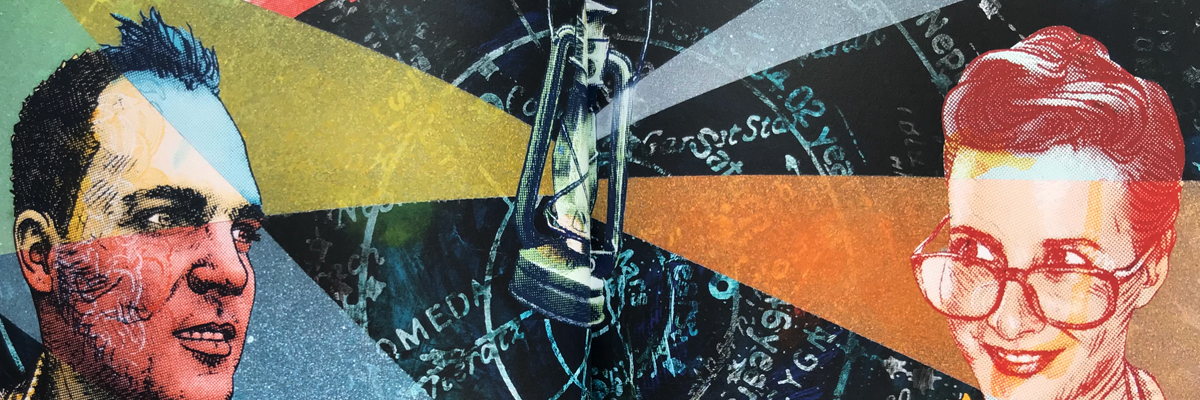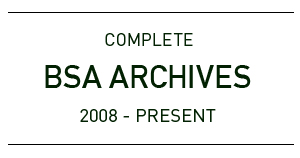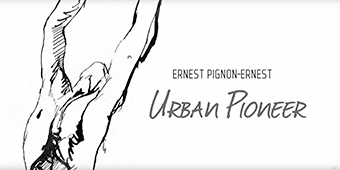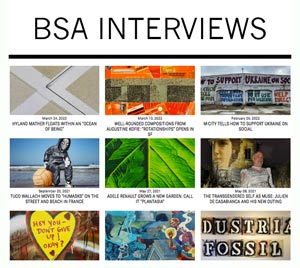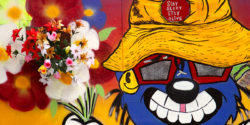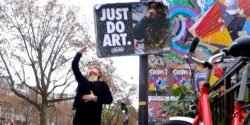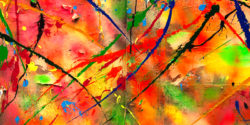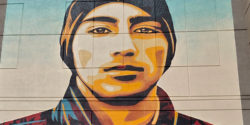“Our early conceptions about a future robot world were made from what we knew about automation and mechanics. Thankfully the surrealists and Dadaists were there to help us with flying ships made of tea pots and mystic, amiable metal helpers soldered and screwed together with spare train pistons and kitchen implements. Our helpers were all carefully oiled and pumping, marching in a mathematical concert through dry-ice fog, propelling herky-jerky humanoids up the path to the thoroughly modern world.
Do Rabotniki exist? They are already here. It just took Various & Gould to remind us.”
~ Steven P. Harrington in his essay “A Mixed and Matched Future-Past: Robotiniki” for “Permanently Improvised: 15 years of Urban Print Collage” by Various & Gould
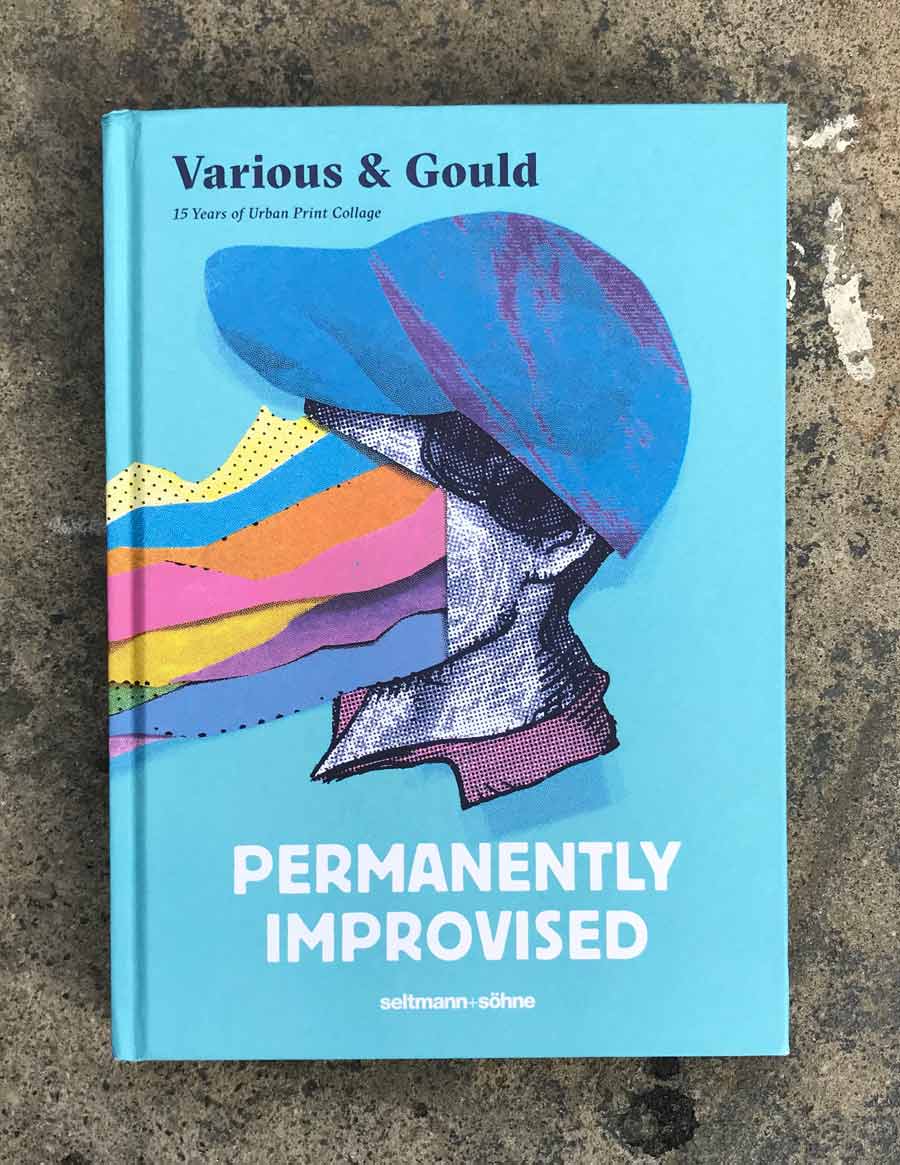
The Berlin based Street Art/fine art duo have released a colorful patchwork overview of 8 major campaigns they formulated for the street in the last decade and a half and present their practice in a series of analytical essays ranging by urban/art intellectuals, activists, and experts including Jan Kage, Steven P. Harrington, Toby Ashraf, Alison Young, Luis Muller Phillip-Shohn, Ilaria Hoppe, Anne Wizorek, Mohamed Amjahid, and an illuminating interview with the artists and Polina Soloveichik. The two open their kooky-cryptic inner fantasy world to the reader and to fans who have wondered how their idiosyncratic method works, and what a world of hybrid thought will produce in our future.
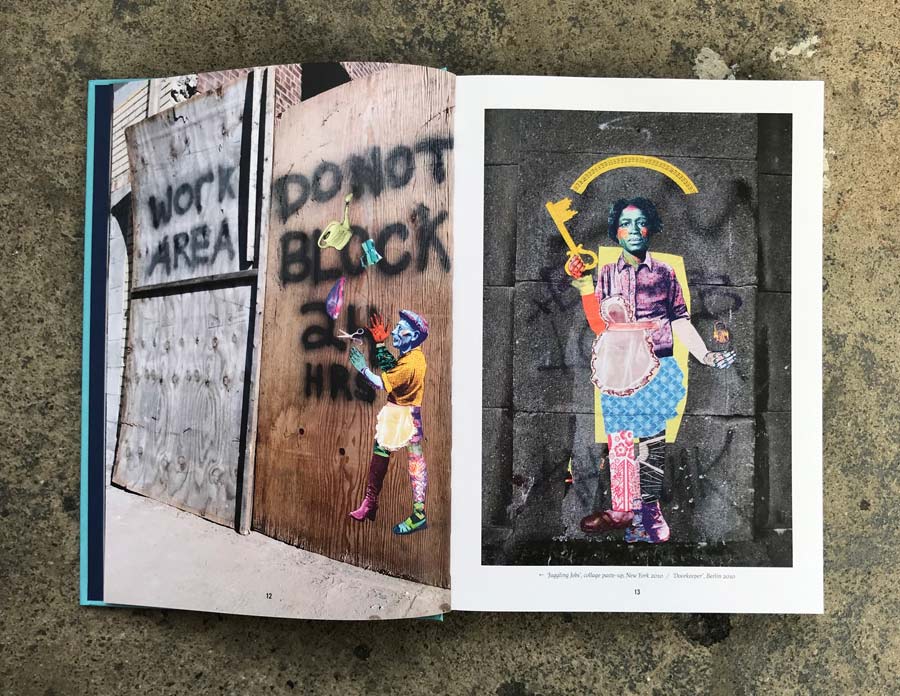
The medium sized hardcover book features instructive and illustrative images of their collaged works placed illegally in the streets, created in studio, presented in the gallery, and in one case, Papier-mâchéd upon public sculptures of Marx and Engels. Intelligent, inquisitive, infused with riddles, the work is delivered with sincere scholarship and humor – even during the process of creation, public interaction, and mid degradation due to the natural elements.
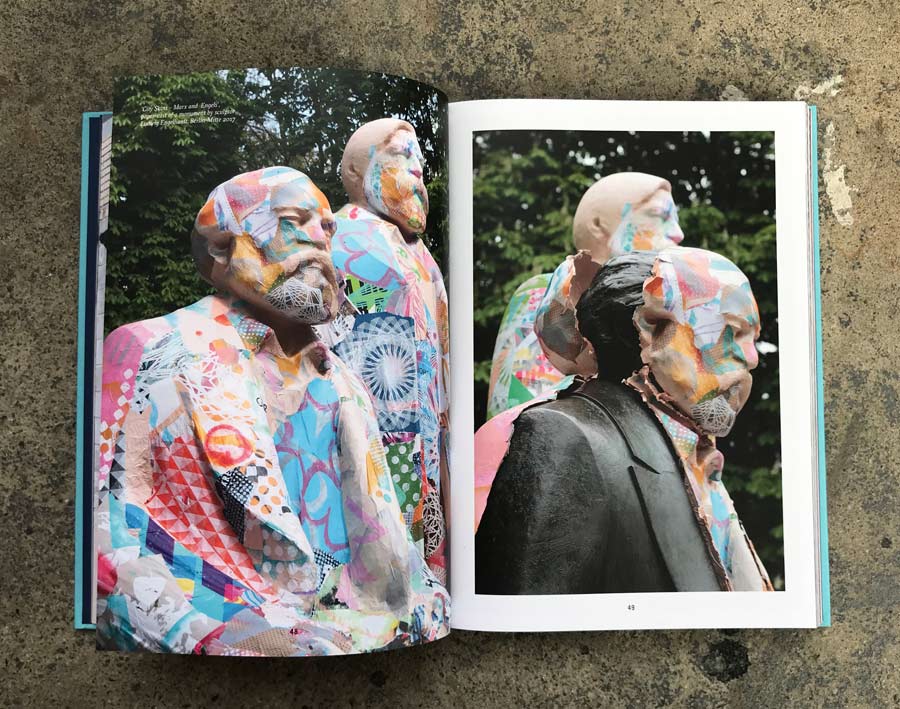
Professor Young discusses V&G’s broken glass abstracts in the context of law reforms that have used the “broken glass theory” as excuse to demean and exploit targeted populations, and Phillip-Sohn looks at their recent bus-stop installation campaign called “Broken Screens” and he observes a fragile technology that, when shattered and inert, “makes us all too tragically aware of how dependent we’ve become on these devices.”
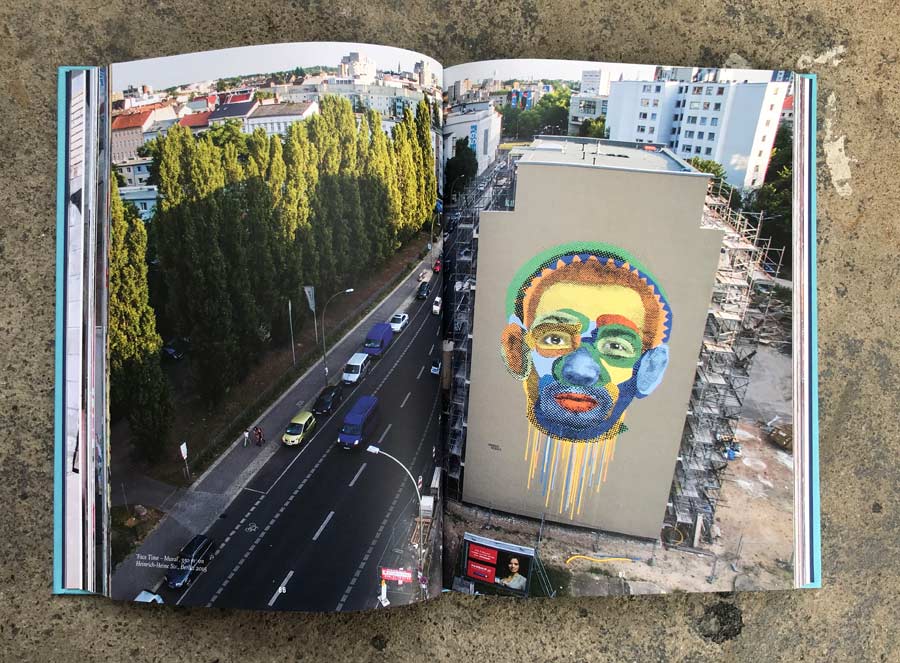
Viewers get a greater appreciation of the tribe-like mentality humans possess just beneath the veneer of civility – the dry timber only waiting to be sparked into flame. The “Wanted Witches” campaign placed 13 portraits of people who are framed as modern pioneers in respect to social issues. Painting them with phosphorus and encouraging you to light a match on them takes public interaction beyond the realms we’re familiar with. The carefully planned and executed installation on city streets powerfully presents the saint-like sacrifice of people who push ahead of us, sometimes burned at the stake as witches – whether literally or perhaps via a hostile media and politicized rhetoric.
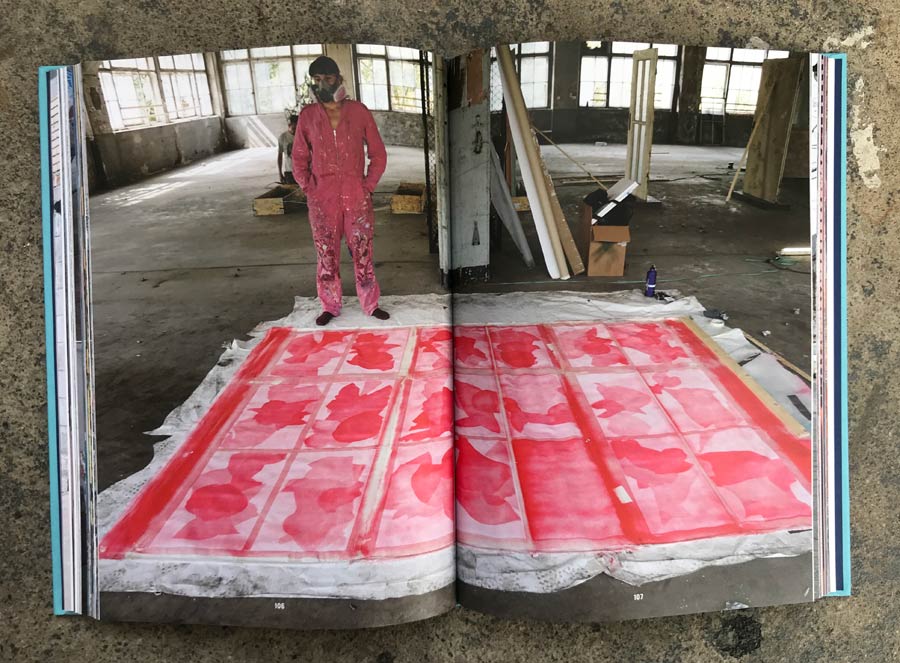
Up to their elbows in paste, ink, paper, and possibility, at the root of much of V&G’s work is an examination of identity; its malleability, its fluidity, even its perceived relevance in societal strata. The through-line in many projects is apparent in its meditation of our flexible selves: Identikit interchanges personalities and keywords to present tensions and examine associations. St. Nimmerlein mocks the arbitrary power of declaring sainthood with fictional personas who surely don’t deserve it. Face Time is a Dadaist study that combines the likenesses and features of many into implausible yet familiar glitch-humans. The aforementioned and early Rabotniki mixes and matches bodies, parts, genders, classes, and identities in a handmade heart-conscious way.
Spread over a decade and a half many of these projects overlap and recombine, creating and reflecting a global evolution we are undergoing- a convulsive re-examination of nearly everything and everyone. The question they may be asking is, “What is the sorting method we will use to recategorize our social and political groupings?”
Using techniques that are reassuringly un-digital, the stunning power of V&G’s mission, even if subliminal, is its intuitive ability to explain our current state. With subtle nods to robotics, androids, AI, identity politics and our innate human creativity, the duo cannily constructs the present and predicts the future, with a sense of humor that we are going to need.

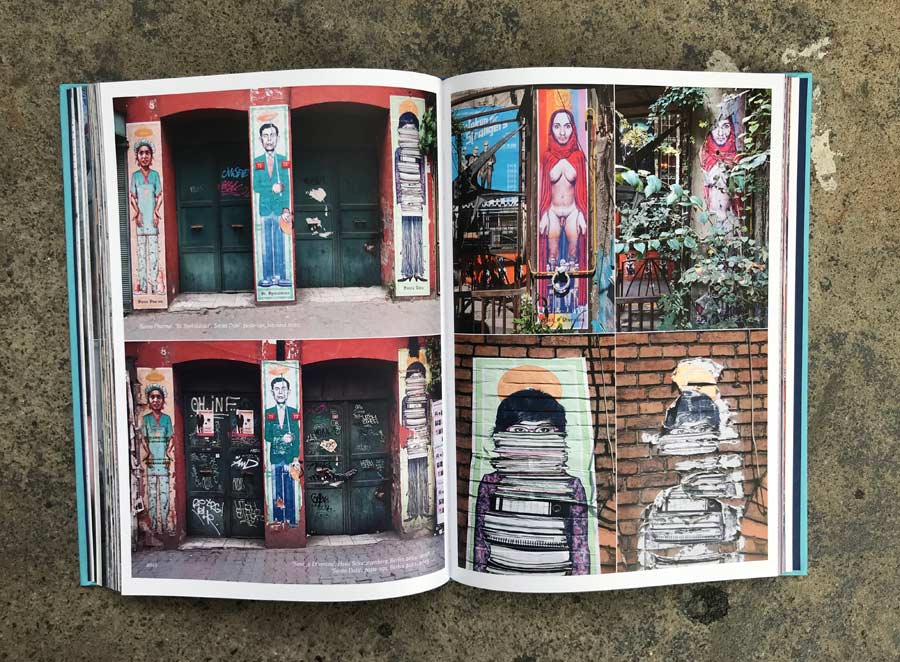
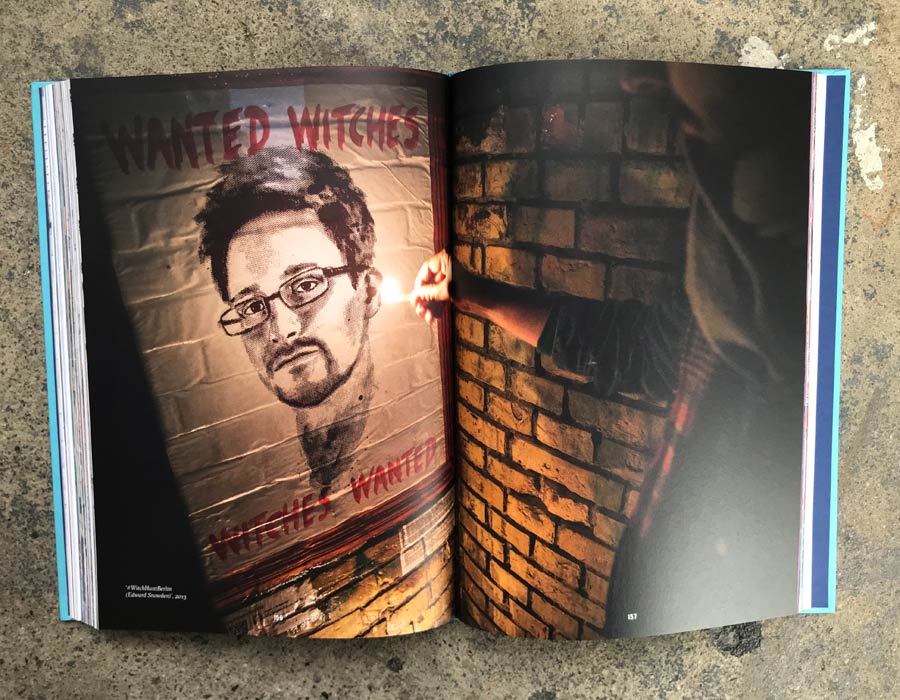
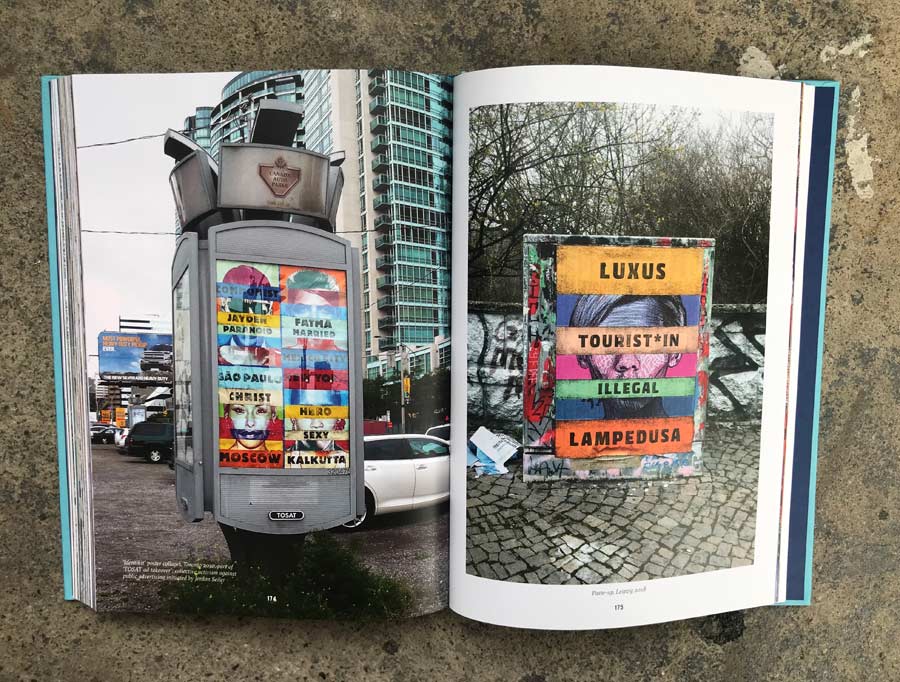
Other Articles You May Like from BSA:
A visit to Swoon’s studio is a full immersion into her passions; meditations on humanity, the process of collaboration, and sculptures you can inhabit. In the rustic warm light of a triple height cav...
Our weekly focus on the moving image and art in the streets. And other oddities. Now screening : 1. Auckland's Al Fresco Festival 2."Where The Food Grows" by Noah Throop 3. Herakut: ...
"Double, double toil and trouble; Fire burn and caldron bubble. Fillet of a fenny snake, In the caldron boil and bake; Flow Master Mop (photo ©Jaime Rojo) Eye of newt and toe of frog, ...
In the vibrant neighborhood of Brindisi, nestled in Italy's southern region, a new mural bears the distinct signature of artist Francesco Ferreri, widely known as Chekos'art. Aptly titled "Goddess of...
Boo! Halloween is tomorrow and you know your subway ride is going to have some Werewolves, Zombies, Sexy Nurses, and Mini Mouses (mice). Also big fat hairy rats, but they are always there. To help y...
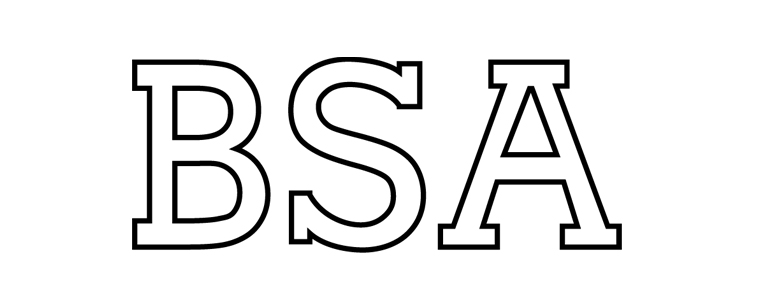 BROOKLYN STREET ART LOVES YOU MORE EVERY DAY
BROOKLYN STREET ART LOVES YOU MORE EVERY DAY